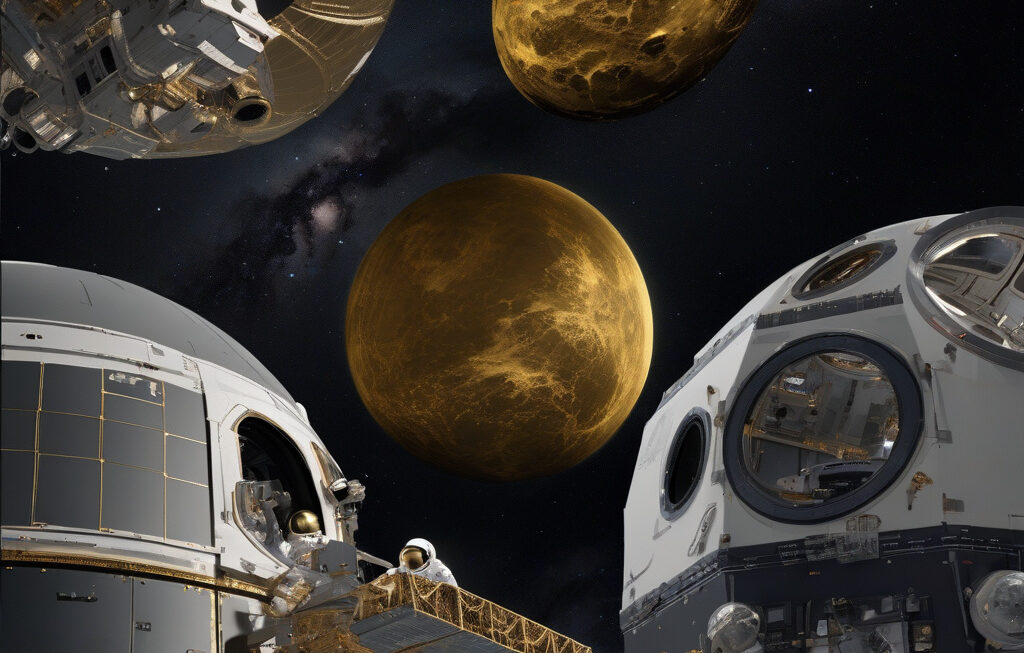The International Space Station Enters Riskiest Period: NASA ‘Deeply Concerned’ Over Safety
The ailing state of the International Space Station (ISS) serves as a sad indicator of the challenges faced by one of humanity’s greatest technological achievements. Recently, NASA has expressed deep concerns over the safety of the ISS as it enters what could be classified as its riskiest period yet. Years of wear and tear, compounded by budget constraints and geopolitical tensions, have culminated in a situation where the future of the ISS hangs in the balance.
Constructed through international collaboration and ingenuity, the ISS has been a symbol of human innovation and cooperation since its launch in 1998. Orbiting the Earth at an altitude of approximately 420 kilometers, the ISS has served as a laboratory for scientific research, a testing ground for future space exploration, and a beacon of hope for a united global community. However, as the ISS approaches the three-decade mark, signs of its deteriorating state have become increasingly apparent.
NASA, along with its international partners, has been closely monitoring the ISS for signs of structural degradation and mechanical failures. Recent reports of air leaks, malfunctioning equipment, and even the possibility of collisions with space debris have raised alarms within the space agency. The implications of these issues are not just limited to the safety of the astronauts aboard the ISS but also extend to the future of human presence in space.
One of the main concerns facing the ISS is its aging infrastructure. Many of the station’s components were designed with a lifespan of 15 years in mind, and as such, they are well past their intended expiration dates. Routine maintenance and repairs have become increasingly challenging, with the dwindling availability of spare parts and the constraints of conducting spacewalks in the unforgiving environment of space.
Budgetary constraints have also played a significant role in the ISS’s current predicament. As governments around the world grapple with competing priorities and fiscal challenges, funding for space exploration has often taken a back seat. NASA’s budget, in particular, has faced scrutiny and uncertainty, leading to difficult decisions regarding the allocation of resources for maintaining the ISS versus investing in future space exploration endeavors.
Geopolitical tensions add another layer of complexity to the ISS’s woes. The station, a joint project involving the United States, Russia, Europe, Japan, and Canada, relies on the cooperation and goodwill of all parties involved. However, strained relations between some of these nations have cast a shadow of uncertainty over the ISS’s future. The recent withdrawal of Russia from the Open Skies Treaty, a key arms control agreement, has further fueled concerns about the sustainability of international partnerships in space.
Despite these challenges, there is still hope for the ISS. NASA, along with its international partners, is exploring various options to ensure the continued operation and safety of the station. From developing innovative repair techniques to considering the possibility of commercializing certain aspects of the ISS, efforts are underway to secure a sustainable future for humanity’s outpost in space.
As the ISS enters what could be its riskiest period yet, the eyes of the world are watching. The fate of this iconic symbol of human achievement hangs in the balance, as decisions made in the coming months and years will shape the course of space exploration for generations to come. It is a critical moment that calls for unity, innovation, and unwavering determination to overcome the challenges that lie ahead.
#InternationalSpaceStation, #NASA, #SpaceExploration, #ISS, #SpaceSafety












